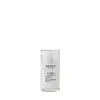What's inside
What's inside
 Key Ingredients
Key Ingredients

 Benefits
Benefits

 Concerns
Concerns

 Ingredients Side-by-side
Ingredients Side-by-side

Water
Skin ConditioningPropylene Glycol
HumectantSodium Stearate
CleansingCalendula Officinalis Extract
Skin ConditioningPEG-150 Distearate
EmulsifyingGlyceryl Behenate
EmollientHydrogenated Vegetable Oil
EmollientPPG-26-Buteth-26
Skin ConditioningPEG-40 Hydrogenated Castor Oil
Emulsifying1,2-Hexanediol
Skin ConditioningSodium Hyaluronate
HumectantLactococcus Ferment Lysate
Skin ConditioningRapeseed Sophorolipids
AntimicrobialBetaine
HumectantCeramide NP
Skin ConditioningPhenoxyethanol
PreservativeEthylhexylglycerin
Skin ConditioningBHT
AntioxidantWater, Propylene Glycol, Sodium Stearate, Calendula Officinalis Extract, PEG-150 Distearate, Glyceryl Behenate, Hydrogenated Vegetable Oil, PPG-26-Buteth-26, PEG-40 Hydrogenated Castor Oil, 1,2-Hexanediol, Sodium Hyaluronate, Lactococcus Ferment Lysate, Rapeseed Sophorolipids, Betaine, Ceramide NP, Phenoxyethanol, Ethylhexylglycerin, BHT
Propylene Glycol
HumectantWater
Skin ConditioningAloe Barbadensis Leaf Juice
Skin ConditioningBis-PEG-18 Methyl Ether Dimethyl Silane
EmollientSodium Stearate
CleansingButylene Glycol
HumectantSodium Acrylates Copolymer
Phenoxyethanol
PreservativePEG-150 Distearate
EmulsifyingLecithin
EmollientSodium Chloride
MaskingPEG-40 Hydrogenated Castor Oil
EmulsifyingCitric Acid
BufferingEthylhexylglycerin
Skin ConditioningSea Water
HumectantGlycerin
HumectantSodium Hyaluronate
HumectantPotassium Sorbate
PreservativeSodium Benzoate
MaskingCocos Nucifera Water
MaskingTocopherol
AntioxidantButyrospermum Parkii Butter
Skin ConditioningVitis Vinifera Seed Oil
EmollientTheobroma Cacao Seed Butter
EmollientCI 42090
Cosmetic ColorantCI 19140
Cosmetic ColorantPropylene Glycol, Water, Aloe Barbadensis Leaf Juice, Bis-PEG-18 Methyl Ether Dimethyl Silane, Sodium Stearate, Butylene Glycol, Sodium Acrylates Copolymer, Phenoxyethanol, PEG-150 Distearate, Lecithin, Sodium Chloride, PEG-40 Hydrogenated Castor Oil, Citric Acid, Ethylhexylglycerin, Sea Water, Glycerin, Sodium Hyaluronate, Potassium Sorbate, Sodium Benzoate, Cocos Nucifera Water, Tocopherol, Butyrospermum Parkii Butter, Vitis Vinifera Seed Oil, Theobroma Cacao Seed Butter, CI 42090, CI 19140
Ingredients Explained
These ingredients are found in both products.
Ingredients higher up in an ingredient list are typically present in a larger amount.
Ethylhexylglycerin (we can't pronounce this either) is commonly used as a preservative and skin softener. It is derived from glyceryl.
You might see Ethylhexylglycerin often paired with other preservatives such as phenoxyethanol. Ethylhexylglycerin has been found to increase the effectiveness of these other preservatives.
Peg-150 Distearate is an emulsifier and thickening agent. It is created from stearic acid.
As an emulsifier, peg-150 distearate helps other ingredients dissolve. This helps prevent ingredient separation.
This ingredient may not be Malassezia folliculitis, or fungal-acne safe.
Learn more about PEG-150 DistearatePeg-40 Hydrogenated Castor Oil is derived from castor oil and polyethylene glycol (PEG). It is used as a emollient and emulsifier.
As an emulsifier, it helps prevent ingredients from separating. It also helps make the other ingredients more soluble; it is often used to solubilize fragrances. This increases spreadability and elongates shelf life in a product.
Emollients help soothe and soften the skin. They do this by creating a protective film on your skin. This barrier helps trap moisture and keeps your skin hydrated. Emollients may be effective at treating dry or itchy skin.
This ingredient may or may not be vegan, depending on the source.
Peg-40 Hydrogenated Castor Oil may not be fungal-acne safe. We recommend speaking with a professional if you have any questions or concerns.
Learn more about PEG-40 Hydrogenated Castor OilPhenoxyethanol is a preservative that has germicide, antimicrobial, and aromatic properties. Studies show that phenoxyethanol can prevent microbial growth. By itself, it has a scent that is similar to that of a rose.
It's often used in formulations along with Caprylyl Glycol to preserve the shelf life of products.
Propylene Glycol is an odorless, colorless liquid. As a humectant, it helps skin retain moisture. It also aids in delivering active ingredients.
Another role of this ingredient is preventing a product from melting or freezing. Propylene glycol also adds antimicrobrial properties to a product, elongating product lifespan.
This ingredient is considered an organic alcohol and commonly added into both cosmetics and foods.
Those with sensitive skin or conditions may develop a rash when using this ingredient.
Learn more about Propylene GlycolSodium Hyaluronate is hyaluronic acid's salt form. It is commonly derived from the sodium salt of hyaluronic acid.
Like hyaluronic acid, it is great at holding water and acts as a humectant. This makes it a great skin hydrating ingredient.
Sodium Hyaluronate is naturally occurring in our bodies and is mostly found in eye fluid and joints.
These are some other common types of Hyaluronic Acid:
Learn more about Sodium HyaluronateSodium stearate is the sodium salt of stearic acid.
The structure of sodium stearate makes it both a cleanser and emulsifier. As a cleanser, it helps dissolve dirt, oil, and other pollutants. As an emulsifier, it helps prevent ingredients from separating. This adds stability to the formula.
Water. It's the most common cosmetic ingredient of all. You'll usually see it at the top of ingredient lists, meaning that it makes up the largest part of the product.
So why is it so popular? Water most often acts as a solvent - this means that it helps dissolve other ingredients into the formulation.
You'll also recognize water as that liquid we all need to stay alive. If you see this, drink a glass of water. Stay hydrated!
Learn more about Water